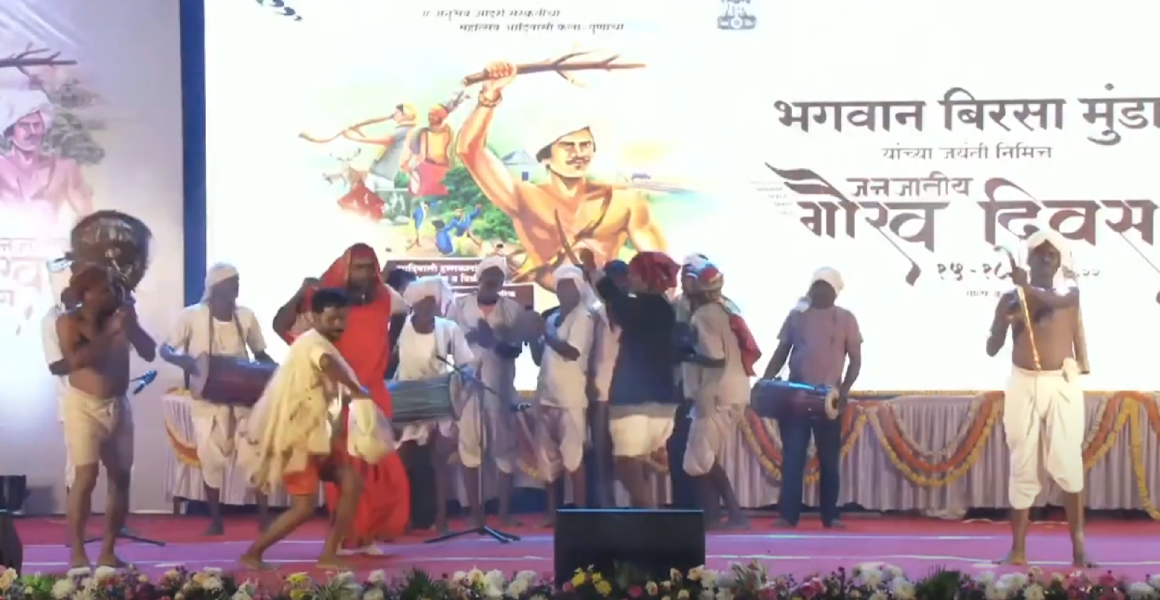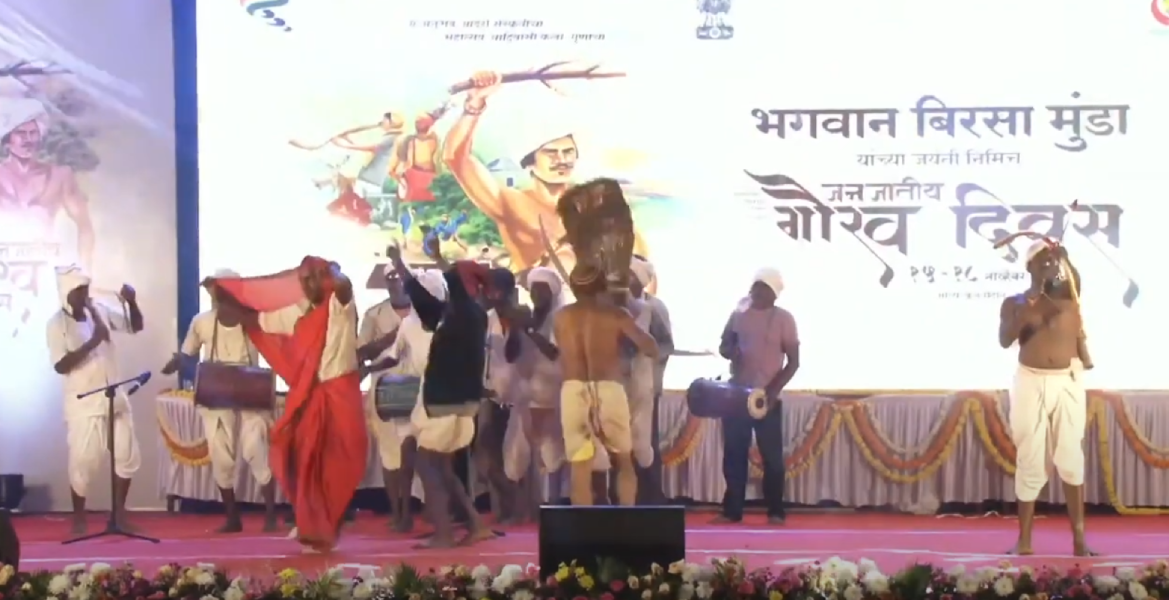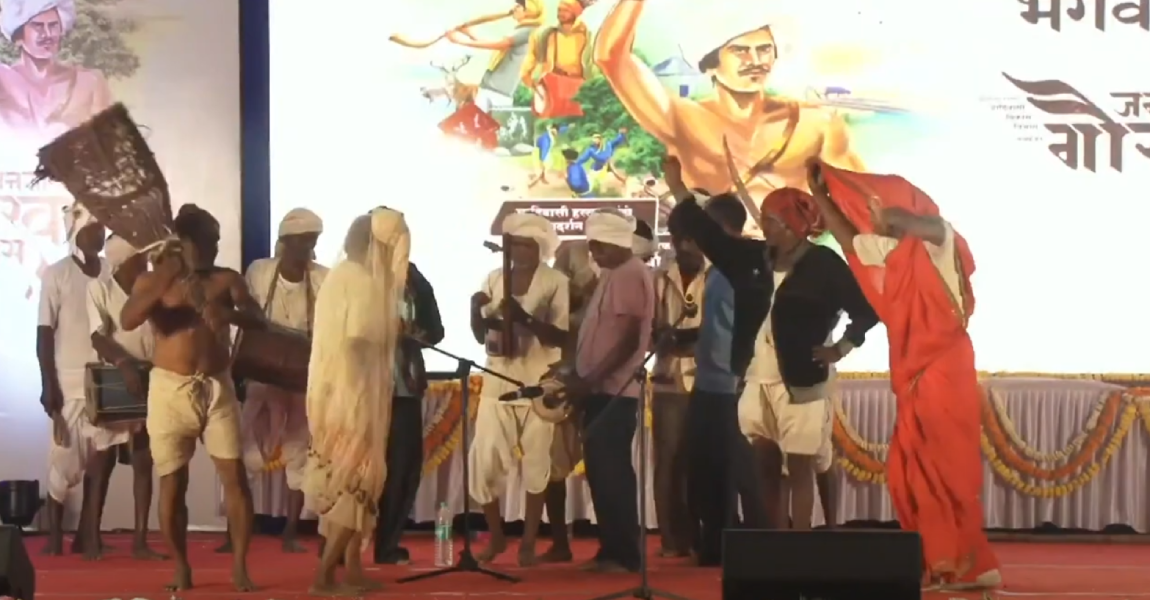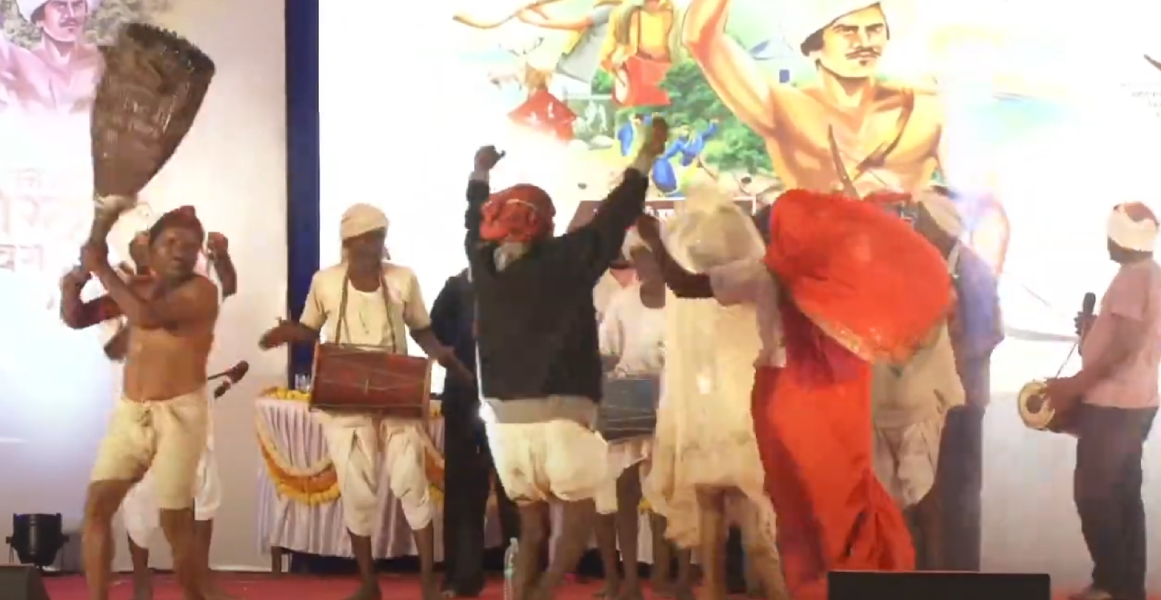State
Tribe Name
Art Type
short description
It is a folk dance of Gonds and Kolams in Yavatmal, Nanded, Chandrapur districts.
'Dandar' of Kolam is celebrated on Diwali. Bhaubij/Bhaiya dooj is a significant day of Dandari. On this day, 'Dandari' visits village to village and dances before houses and demands reward. This dance form is regarded as a kind of Mujra where the artiste dances for bringing prosperity to their masters or upper class / senior people and demands a reward from them in return.
'Dandar' of Kolam is celebrated on Diwali. Bhaubij/Bhaiya dooj is a significant day of Dandari. On this day, 'Dandari' visits village to village and dances before houses and demands reward. This dance form is regarded as a kind of Mujra where the artiste dances for bringing prosperity to their masters or upper class / senior people and demands a reward from them in return.
Thumbnail

Filter Postion
Left
Filter Background
Off
Theme
Filter Header Image

content
Image

description
It is a folk dance of Gonds and Kolams in Yavatmal, Nanded, Chandrapur districts.
'Dandar' of Kolam is celebrated on Diwali. Bhaubij/Bhaiya dooj is a significant day of Dandari. On this day, 'Dandari' visits village to village and dances before houses and demands reward. This dance form is regarded as a kind of Mujra where the artiste dances for bringing prosperity to their masters or upper class / senior people and demands a reward from them in return.
'Dandar' of Kolam is celebrated on Diwali. Bhaubij/Bhaiya dooj is a significant day of Dandari. On this day, 'Dandari' visits village to village and dances before houses and demands reward. This dance form is regarded as a kind of Mujra where the artiste dances for bringing prosperity to their masters or upper class / senior people and demands a reward from them in return.
Image Mode
landscape
Image

description
There are three forms of Dandara of Gonds :- (1) Small dandar, (2) Big dandar (3) Chautali dandar. Small Dandara is also referred to as 'Dandara of round sari', Big Dandara is 'Dandara of Ghena' and Chautali dander is also referred to as 'Dandara of one line'.
Dandara came from the god Lingala. The god 'Lingal' is located in a far-off hill. Dandar dance began to satisfy him. This is Lingala Puja in a sense. In accordance with the belief of Gond and Kolam, the word 'Ligal' signifies Lord Shri Krishna has come into use very recently. The original Lingala God was a real mountain.
Dandara came from the god Lingala. The god 'Lingal' is located in a far-off hill. Dandar dance began to satisfy him. This is Lingala Puja in a sense. In accordance with the belief of Gond and Kolam, the word 'Ligal' signifies Lord Shri Krishna has come into use very recently. The original Lingala God was a real mountain.
Image Mode
landscape
Image

description
There are two forms of kolam dandar dance. 'Kotal Bhogi' and 'Koya Bhogi', 'Kotal Bhogi' is danced to pay tribute to the Gonds, whereas 'Koya Bhogi Dandar' is danced to pay tribute to village workers, chiefs etc. Yavatmal, Nanded, Chandrapur districts were ruled by Rajgonda.
To dance in the honor of the rulers could have been misconstrued as 'Mujra' in some way. There is expected reward after this dance. Dandar dance starts with pooja. Here in the puja five or seven sacks of cow dung are symbolically thrown according to clan tradition, this is known as 'Pooja of five Pandavas'. Dandar starts from Diwali and continues up to Bhaubeej. Right from the start of the Dandar to the finish, the young men cannot alter their attire of dressing in a saree (Lugdi).
Once the pooja is over, there is a 'Mahajan' (Head of the village) of the village, the Dandar begins from his residence.
'Didan' and 'Dandar' are dance forms of two tribes of two different places.
But there is a striking resemblance between them. These are the rising steps of tribal folk dance dramas. There is no doubt that the three dance forms 'Didan', a silent performance of God's praises with instruments, Dandar, which represents various emotions of the mind, and 'Bhavada', which conveys a story through masks and words, are the creations of tribal folk theater. The traditional tribal dance - Natay - Bhavada Research on tribals in India began in very recent history. Adivasi came to the world from his hills only due to the necessity of census. Census began in India under British rule. Because of this work in 1891, the statesmen first saw the tribals. The earlier literature concerning Indian tribals has been authored by the officials concerned with this census.
The Census Bureau continues to issue separate reports and special administrative data concerning tribals and comparable castes.
There has been very little exploratory literature on Indian tribalism from a conscious anthropological viewpoint.
Again the same has been authored by the individuals concerned with the administration.
To dance in the honor of the rulers could have been misconstrued as 'Mujra' in some way. There is expected reward after this dance. Dandar dance starts with pooja. Here in the puja five or seven sacks of cow dung are symbolically thrown according to clan tradition, this is known as 'Pooja of five Pandavas'. Dandar starts from Diwali and continues up to Bhaubeej. Right from the start of the Dandar to the finish, the young men cannot alter their attire of dressing in a saree (Lugdi).
Once the pooja is over, there is a 'Mahajan' (Head of the village) of the village, the Dandar begins from his residence.
'Didan' and 'Dandar' are dance forms of two tribes of two different places.
But there is a striking resemblance between them. These are the rising steps of tribal folk dance dramas. There is no doubt that the three dance forms 'Didan', a silent performance of God's praises with instruments, Dandar, which represents various emotions of the mind, and 'Bhavada', which conveys a story through masks and words, are the creations of tribal folk theater. The traditional tribal dance - Natay - Bhavada Research on tribals in India began in very recent history. Adivasi came to the world from his hills only due to the necessity of census. Census began in India under British rule. Because of this work in 1891, the statesmen first saw the tribals. The earlier literature concerning Indian tribals has been authored by the officials concerned with this census.
The Census Bureau continues to issue separate reports and special administrative data concerning tribals and comparable castes.
There has been very little exploratory literature on Indian tribalism from a conscious anthropological viewpoint.
Again the same has been authored by the individuals concerned with the administration.
Image Mode
landscape
Image

description
'Dandar' is a tribal folk dance. But the first obeisance of this dance is to Maruti as per custom. The second obeisance is to Birsan God, the third to Badadeva and the fourth to Lord Ganapati.
Dandar dance chalas (rythems & formations) are referred as 'kaadya' or 'kadya'(Rings).
Total 21 rings of Dandara.
They are referred as 'Kola'. The 21 kolas occur in a particular order. Bhimal Kola, Chandkai Kola,Recently, Dhemsa kola, Sakri Kola, Belung kola, Kuhi Kola, Urup KolaJhalka Kola,Zola Kola,Muharram Kola, Hude kola,Chili, Kola, Chankachandan, Sugaran Kola etc. are some of the 21 kolas of dander. Because of the corrupt duplication of tamasha and cinema, women have begun dancing with motions akin to party tamasha dancers. Costumes and For this dance men wear Lugdi.
Dandar dance chalas (rythems & formations) are referred as 'kaadya' or 'kadya'(Rings).
Total 21 rings of Dandara.
They are referred as 'Kola'. The 21 kolas occur in a particular order. Bhimal Kola, Chandkai Kola,Recently, Dhemsa kola, Sakri Kola, Belung kola, Kuhi Kola, Urup KolaJhalka Kola,Zola Kola,Muharram Kola, Hude kola,Chili, Kola, Chankachandan, Sugaran Kola etc. are some of the 21 kolas of dander. Because of the corrupt duplication of tamasha and cinema, women have begun dancing with motions akin to party tamasha dancers. Costumes and For this dance men wear Lugdi.
Image Mode
landscape
Image

description
A minimum of 6-7 pairs should be there for Dandara. Duffs are played when Dandar goes out of the village. Dandari is played with instruments such as tilbuli, dholak, cymbals and chondak. Dandar is also sung. For that, Abhimanyu takes subjects like marriage, Ghatotkacha's Mayabazaar.
Image Mode
landscape
promoted
Off
Verified
On
